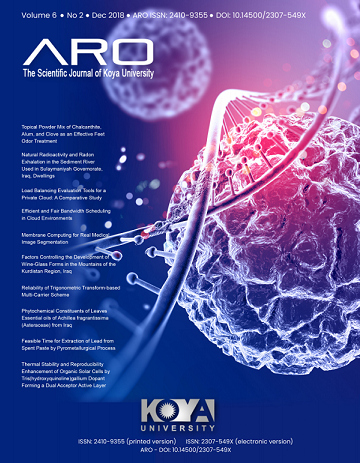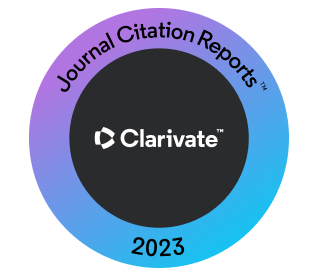Topical Powder Mix of Chalcanthite, Alum, and Clove as an Effective Feet Odor Treatment
Abstract
Treating foot Odor infected with pathogenic fungus and bacteria has been a major concern for pharmaceutical companies. Finding a right treatment with minimum side effects has been of particular importance. This study configures a homemade topical powder mix in treating foot odor. The homemade topical powder mix is free of any harmful chemical constituents; its main constituents being Chalcanthite, Alum, and Clove. Energy dispersive X-ray fluorescence was used for the determination of the chemical composition component of Chalcanthite, Alum, Clove, and the powder mix of Chalcanthite, Alum, and Clove. XRF was able to measure elements such as Oxygen, Sulfur, Aluminum, Potassium, and Copper in kα line. The antimicrobial activity of the powder mix of Chalcanthite, Alum, and Clove was studied against two pathogenic fungi, which are Epidermophyton sp., and Trichophyton sp., and two pathogenic bacteria, which are Brevibacterium sp., and Staphylococcus sp. Screening for antibacterial and antifungal was done using agar disk diffusion. The growth inhibition zone measured ranged from 16 to 28 mm for all the sensitive fungal, and ranged from 14 to 27 mm for the sensitive bacteria.Downloads
References
Ara, K., Hama, M., Akiba, S., Koike, K., Okisaka, K., Hagura, T., Kamiya, T. and Tomita, F., 2006. Foot odor due to microbial metabolism and its control. Canadian Journal of Microbiology, 52(4), pp.357-364.
Barbaro, S.E. and Symonds, J.A., 2006. The efficacy of a novel Quartenary ammonium foot spray (NQAFS) against foot odor causing microorganisms. Rivier College Online Academic Journal, 2, pp.1.
Bauer, A.W., Kirby, W.M., Sherris, J.C. and Turck, M., 1966. Antibiotic susceptibility testing by a standardized single disk method. American Journal of Clinical Pathology, 45(4), pp.493-496.
Borkow, G., 2014. Using copper to improve the well-being of the skin. Current Chemical Biology, 8(2), pp.89-102.
CLSI. Clinical and Laboratory Standards Institute., 2012. Performance Standards for Antimicrobial Susceptibility Testing; Twenty-Second Informational Supplement. CLSI Document M 100-S22.
Dawson, K.A. and Boling, J.A., 1987. Effects of potassium ion concentrations on the antimicrobial activities of ionophores against ruminal anaerobes. Applied and Environmental Microbiology, 53(10), pp.2363-2367.
Essa, A.M. and Khallaf, M.K., 2016. Antimicrobial potential of consolidation polymers loaded with biological copper nanoparticles. BMC Microbiology, 16(1), pp.144.
Hobman, J.L. and Crossman, L.C., 2015. Bacterial antimicrobial metal ion resistance. Journal of Medical Microbiology, 64(5), pp.471-497.
Jang, M., 2010. Application of portable X-ray fluorescence (PXRF) for heavy metal analysis of soils in crop fields near abandoned mine sites. Environmental Geochemistry and Health, 32(3), pp.207-216.
Kanda, F., Yagi, E., Fukuda, M., Nakajima, K., Ohta, T. and Nakata, O., 1990. Elucidation of chemical compounds responsible for foot malodour. British Journal of Dermatology, 122(6), pp.771-776.
Kim, S., Kubec, R. and Musah, R.A., 2006. Antibacterial and antifungal activity of sulfur-containing compounds from Petiveria alliacea L. Journal of Ethnopharmacology, 104(1-2), pp.188-192.
Marshall, J., Holland, K.T. and Gribbon, E.M., 1988. Acomparative study of the cutaneous microflora of normal feet with low and high levels of odour. Journal of Applied Microbiology, 65(1), pp.61-68.
McWilliams, S.A., Montgomery, I., Jenkinson, D.M., Elder, H.Y., Wilson, S.M. and Sutton, A.M., 1987. Effects of topically-applied antiperspirant on sweat gland function. British Journal of Dermatology, 117(5), pp.617-626.
Oro, D., Heissler, A., Rossi, E.M., Scapin, D., da Silva Malheiros, P. and Boff, E., 2015. Antifungal activity of natural compounds against Candida species isolated from HIV-positive patients. Asian Pacific Journal of Tropical Biomedicine, 5(9), pp.781-784.
Peciulyte, D. and Dirginciute-Volodkiene, V., 2012. Effect of zinc and copper on cultivable populations of soil fungi with special reference to entomopathogenic fungi. Ekologija, 58(2), pp.65-85.
Peng, S., Liu, Z., Sun, T., Ma, Y., and Ding, X., 2013. Spatially resolved in situ measurements of the ion distribution near the surface of an electrode in steadystate diffusion in an electrolytic tank with confocal micro X-ray fluorescence. Analytical Chemistry, 86(1), pp.362-366.
Percival, S.L., Bowler, P.G. and Russell, D., 2005. Bacterial resistance to silver in wound care. Journal of Hospital Infection, 60(1), pp.1-7. Sharquie, K.E., 1996.
Intralesional therapy of cutaneous leishmaniasis with 2% zinc sulfate solution. Journal Pan Arab League of Dermatologist, 7, pp.41-46.
Sharquie, K.E., Noaimi, A.A. and Hameed, S.D., 2013. Topical 15% zinc sulfate solution is an effective therapy for feet odor. Journal of Cosmetics, Dermatological Sciences and Applications, 3(03), pp.203-208.
Smaldone, G.T. and Helmann, J.D., 2007. CsoR regulates the copper efflux operon copZA in Bacillus subtilis. Microbiology, 153(12), pp.4123-4128.
Suleiman, M., Al-Masri, M., Al Ali, A., Aref, D., Hussein, A., Saadeddin, I. and Warad, I., 2015. Synthesis of nano-sized sulfur nanoparticles and their antibacterial activities. Journal of Materials and Environmental Science, 6(2), pp.513-518.
Varkey, A.J., 2010. Antibacterial properties of some metals and alloys in combating coliforms in contaminated water. Scientific Research and Essays, 5(24), pp.3834-3839.
Wayne, P.A., 2007. Clinical and laboratory standards institute. Performance Standards for Antimicrobial Susceptibility Testing, 2007, 17.
Yamamoto, K. and Ishihama, A., 2005. Transcriptional response of Escherichia coli to external copper. Molecular Microbiology, 56(1), pp.215-227.
Copyright (c) 2018 Amera G. Baker

This work is licensed under a Creative Commons Attribution-NonCommercial-ShareAlike 4.0 International License.
Authors who choose to publish their work with Aro agree to the following terms:
-
Authors retain the copyright to their work and grant the journal the right of first publication. The work is simultaneously licensed under a Creative Commons Attribution License [CC BY-NC-SA 4.0]. This license allows others to share the work with an acknowledgement of the work's authorship and initial publication in this journal.
-
Authors have the freedom to enter into separate agreements for the non-exclusive distribution of the journal's published version of the work. This includes options such as posting it to an institutional repository or publishing it in a book, as long as proper acknowledgement is given to its initial publication in this journal.
-
Authors are encouraged to share and post their work online, including in institutional repositories or on their personal websites, both prior to and during the submission process. This practice can lead to productive exchanges and increase the visibility and citation of the published work.
By agreeing to these terms, authors acknowledge the importance of open access and the benefits it brings to the scholarly community.














 ARO Journal: A Scientific Periodical Open Access Journal and has no APC & ASC.
ARO Journal: A Scientific Periodical Open Access Journal and has no APC & ASC.